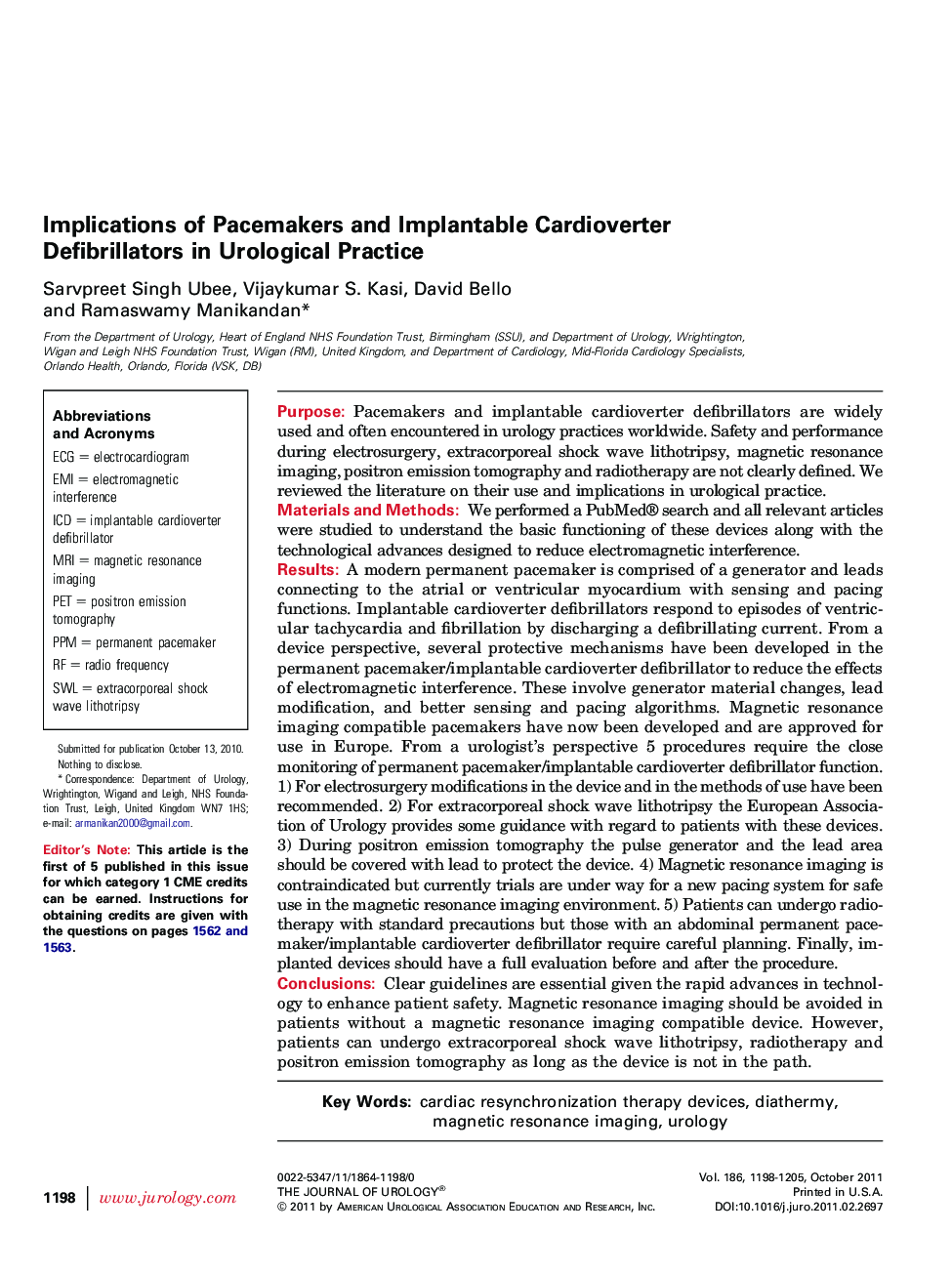| کد مقاله | کد نشریه | سال انتشار | مقاله انگلیسی | نسخه تمام متن |
|---|---|---|---|---|
| 3868413 | 1598943 | 2011 | 8 صفحه PDF | دانلود رایگان |

PurposePacemakers and implantable cardioverter defibrillators are widely used and often encountered in urology practices worldwide. Safety and performance during electrosurgery, extracorporeal shock wave lithotripsy, magnetic resonance imaging, positron emission tomography and radiotherapy are not clearly defined. We reviewed the literature on their use and implications in urological practice.Materials and MethodsWe performed a PubMed® search and all relevant articles were studied to understand the basic functioning of these devices along with the technological advances designed to reduce electromagnetic interference.ResultsA modern permanent pacemaker is comprised of a generator and leads connecting to the atrial or ventricular myocardium with sensing and pacing functions. Implantable cardioverter defibrillators respond to episodes of ventricular tachycardia and fibrillation by discharging a defibrillating current. From a device perspective, several protective mechanisms have been developed in the permanent pacemaker/implantable cardioverter defibrillator to reduce the effects of electromagnetic interference. These involve generator material changes, lead modification, and better sensing and pacing algorithms. Magnetic resonance imaging compatible pacemakers have now been developed and are approved for use in Europe. From a urologist's perspective 5 procedures require the close monitoring of permanent pacemaker/implantable cardioverter defibrillator function. 1) For electrosurgery modifications in the device and in the methods of use have been recommended. 2) For extracorporeal shock wave lithotripsy the European Association of Urology provides some guidance with regard to patients with these devices. 3) During positron emission tomography the pulse generator and the lead area should be covered with lead to protect the device. 4) Magnetic resonance imaging is contraindicated but currently trials are under way for a new pacing system for safe use in the magnetic resonance imaging environment. 5) Patients can undergo radiotherapy with standard precautions but those with an abdominal permanent pacemaker/implantable cardioverter defibrillator require careful planning. Finally, implanted devices should have a full evaluation before and after the procedure.ConclusionsClear guidelines are essential given the rapid advances in technology to enhance patient safety. Magnetic resonance imaging should be avoided in patients without a magnetic resonance imaging compatible device. However, patients can undergo extracorporeal shock wave lithotripsy, radiotherapy and positron emission tomography as long as the device is not in the path.
Journal: The Journal of Urology - Volume 186, Issue 4, October 2011, Pages 1198–1205